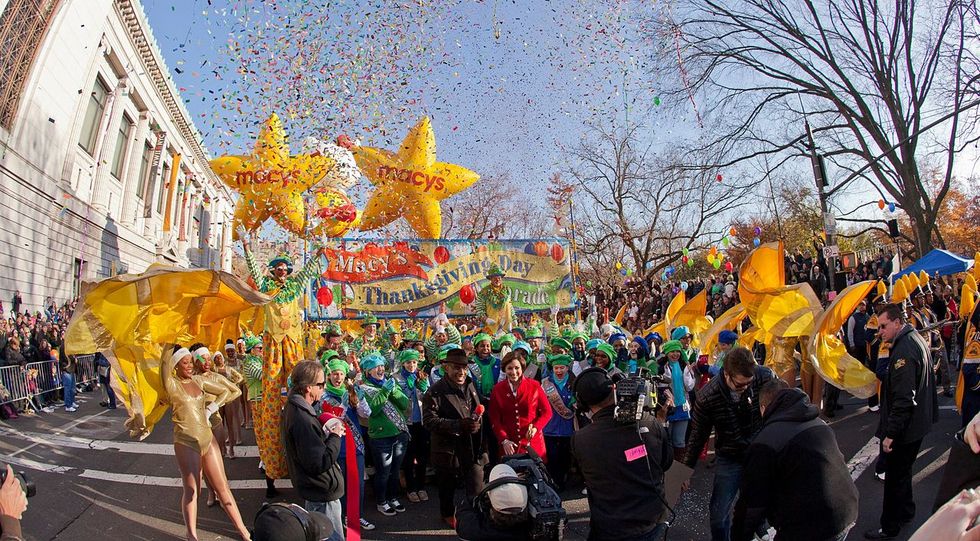During one of the most anticipated events of the year, more than 80 million Americans were glued to their TVs. The day had finally come. The controversial and outspoken businessman Donald Trump faced off against the also controversial former First Lady and politician Hillary Clinton. The two candidates traded jabs at each other while the moderator Lester Holt desperately tried to suppress both the candidates and the audience. Donald Trump tried to get his message across to resonate with working class Americans while Hillary Clinton tried to depict Trump as a con artist, inept at running the country and shouldering the responsibilities of President. Here's how it went down:
1. The Economy
The first section was about the prosperity of America: the economy. Trump seemed the most energized during this beginning stage of the debate. He immediately emphasized America's failing economy as jobs were being outsourced and competition from other countries was wearing down the country. Hillary Clinton responded with branding Trump's economic plans as "trumped-up trickle down" and tried to depict herself as better at economy. Trump hit Clinton hard with his argument that she was a career politician and she would never actually fix the country. During this segment, Trump had gained enormous momentum and was looking like he would carry this momentum throughout the debate. Hillary Clinton, on the other hand, looked like she was keeping up but struggling to find a way around Trump's arguments.
2. Taxes
Hillary Clinton advocated that there should be an increase of taxes on wealthy people while Trump argued the opposite. At this point Clinton seemed to take the lead, turning Trump's argument that he didn't like to pay taxes against him by questioning whether he paid taxes at all. She also made a dent in Trump's momentum by questioning his refusal to release his tax returns. She then proceeded to portray Trump as a cunning businessman that trampled over small businesses and workers by not giving them pay. Trump's momentum subsided during this segment, and Clinton began to lead the debate.
3. Race
Trump desperately needed to put up a good performance in this segment given his single-digit polling numbers with African Americans, a key voting constituency. Clinton, in her first 2 minutes, emphasized healing trust between police and African American communities and called for criminal justice reform. Trump painted a dire picture of the African American community and replied that stop-and-frisk could bring down crime while Clinton fired back that stop-and-frisk was unconstitutional. Trump didn't really get his message across to African Americans and his talk of how he had businesses in certain cities of racial controversy didn't really help either. On the birtherism part, Trump claimed that his birther talk got somehow forced Obama to find his birth certificate and that Hillary Clinton was the originator of the birther movement. Clinton responded that Trump's claims were untrue, as he had continued the birther movement all the way until 2016, a long time after Obama revealed his birth certificate. The birther segment didn't really feel like an important issue that needed to be addressed, but Clinton was able to poke holes in Trump's claims.
4. Security
During this segment Clinton tied Trump to hostile states such as Russia and his unusual praise of Vladimir Putin while Trump put an emphasis on Clinton's emails as well as his endorsements by many generals and Border Patrol agents. Trump tied Obama and Clinton to the founding of ISIS and the reason why ISIS became such a large state in a short time. He also made powerful arguments on how Hillary Clinton made disasters in Iraq and Libya. Clinton maintained her composure and responded with reports that ISIS territory was shrinking. Throughout the segment Trump tied Clinton to the founding of ISIS, which Clinton could not overcome. However, Clinton made a strong jab, saying she was an expert at working with other nations and coalition-building and diplomacy. She turned Trump's temperament argument against him by branding Trump as a man with a cavalier attitude that shouldn't be around nuclear weapons. At the end both candidates traded barbs at each other's stamina and "presidential looks".
5. The Bait
Trump's momentum started to deteriorate after the economic section and he began taking Clinton's bait. One of the most prevalent examples was his discussion on whether he supported the Iraq war. Clinton spoke a few sentences about how he had supported the war, and he went off on a tangent in extreme detail about how he didn't support the war and even included his interview with Howard Stern as to evidence that he didn't support the war. His rant hurt his appearance because he talked about something irrelevant while also completely lying about his stances. It also made him seem easy to anger, which reinforced Clinton's argument that he had a cavalier attitude.
6. The Moderator
The moderator, NBC's Lester Holt, struggled to maintain order as both candidates went past their preset speech times. Both candidates repeatedly ignored his comments about their speech times, and he couldn't get the candidates to end the first section on time. The economic section dragged on way past schedule, and, thus, the next two sections were much shorter. Lester Holt showed some bias as he only fact-checked Trump's claims, such as stop-and-frisk and his stance on the Iraq War. He also seemed to only ask hard questions directed towards Trump.
7. The Polling
Online polls showed Trump with tremendous support and Trump cited them the next day as evidence that he had won the debate. However, online polls are extremely inaccurate as voters can vote multiple times and many more Trump supporters go online. Random sample polling, however, showed that Clinton clearly won the debate. Even Fox News, a traditionally conservative news outlet, reported an overwhelming victory for Hillary Clinton.






 StableDiffusion
StableDiffusion











